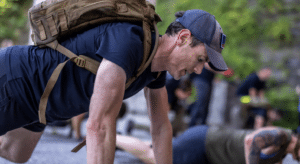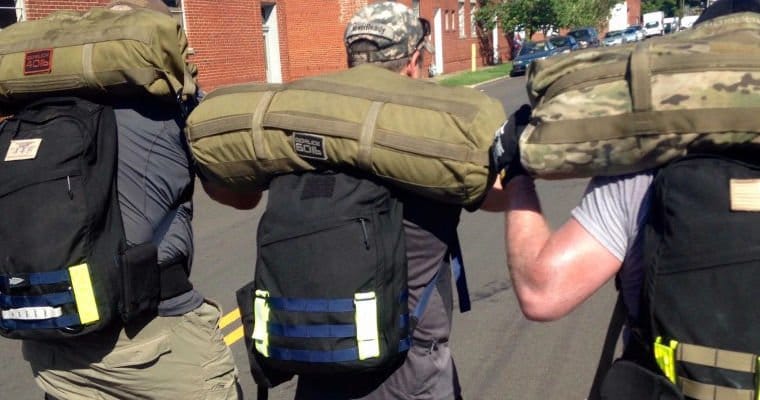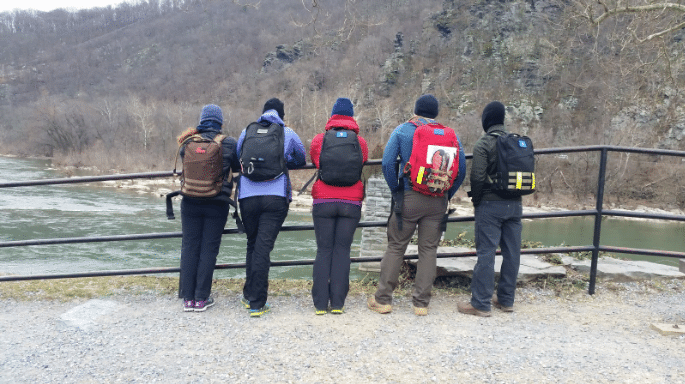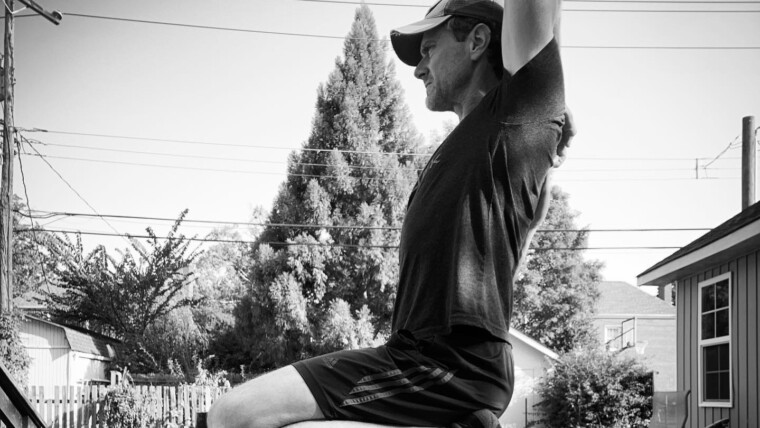This post is brought to you by MudGear – Made Tougher.
There is one question that frequently comes up after explaining what rucking is to someone unfamiliar with it. Walking around with weight on your back inevitable leads them to ask,
“Is rucking safe for your back?”
The short answer is, yes. Rucking is safe for your back.
The caveat is that like any physical activity, there are steps you should take to ensure the safety of your back while rucking.
Make Rucking Safe for Your Back
While people often ask “Is rucking safe for your back?” The better question is, “How can I MAKE SURE rucking is SAFE for my back?”
While not exhaustive, we believe there are at least three things you can do to ensure your keep your back safe while rucking.
3 Keys to Rucking without Back Pain
- Proper Weight
- Proper Packing
- Proper Posture
Proper Weight for Rucking | How much should I carry?
“Should” is the optimal word.
New ruckers are sometimes tempted to strut their stuff by strapping on all the weight they can tolerate while standing. But rucking is more than standing.
Aside from the added weight, you must add time and distance. Even a few pounds too many will take their toll over multiple miles or a couple of hours.
On the other hand, do not mistake rucking for a casual stroll. The resistance of added weight is a catalyst for getting stronger.

With that in mind, here are some guides for potential weights to consider to ensure safety.
- Novice Ruckers
- Carry 5-15% of your body weight.
- It is alright to be cautious and go light as you find your groove.
- Intermediate Ruckers
- Carry 16-25% of your body weight.
- Now that you are getting comfortable, find weight and distances that will challenge you.
- Experienced Ruckers (borderline insane)
- Carry 26-40% of your body weight.
- The pounds on your back and miles under your belt are getting to your head, unleashing that competitive mantra: “You can’t break me!”
Ruck plates may be ironclad, but these weight suggestions are not. Pay attention to your body while working smart and hard.
Proper Ruck Packing | How and where should I wear the weight?
There are two schools of thought when it comes to weight distribution.
The hiking community encourages carrying weight low against your hips to utilize strong, mid-body muscles. Wilderness outfitters are trained to pack and strap accordingly.
Meanwhile, the military crowd is all about the “high and tight” shoulder carry centralizing the weight between the shoulder blades. Simply use a shorter rucksack or layer the bottom of your larger ruck with something light that can help lift the placement of your added weight.
While we have more confidence in the shoulder carry, a good rucksack will include wide (often cushioned) shoulder straps with a waistbelt option so you can choose the carrying style that feels best to you. (We’re partial to the GORUCK Rucker 3.0.)
Whether you prefer the brunt of your load up high or down low, everyone agrees to seat the weight as centered with the spine as possible. Tighten your straps to keep the ruck close to your body and its contents from shifting.
Proper Posture for Rucking | To lean or not to lean?
The final component for rucking without back pain is maintaining good posture. That includes feet pointed forward, neutral spine (ie, don’t slouch), and engaged core.
Lean forward slightly to counterbalance your ruck – especially on aggressive inclines, but don’t get carried away.
If you find yourself needing to lean a lot to maintain balance, lighten your load.
Other Tips to Protect Your Back While Rucking
Other precautions to assure a great rucking experience void of back pain include stretching before/after your rucks to ensure your body has a better degree of mobility.
In addition, always be sure to lift with your legs when first putting your ruck on, relocating it, or stowing it away. Haphazardly lifting it up and setting it down is a sure way to injure your back.
Got any questions or additional advice? Sound of in the comments below.








3 Replies to Keeping Your Back Safe While Rucking
Comments are closed.
What are the Best Shoes for Rucking?
Best Rucking Gear on Amazon.com
Rucking for Beginners: A Complete Guide to Getting Started
Best Rucking Backpacks List
What is Rucking?
Is Rucking Better Than Running?
Best Rucking Backpacks List
How Many Calories Do I Burn Rucking?